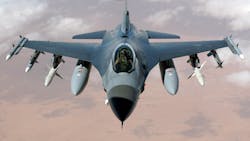20 Years after Kosovo: how a war in the Balkans changed the U.S. Air Force forever
WASHINGTON – April 12, 1999. It’s 12:30 in the afternoon and Brig. Gen. Dan Leaf, flying in the cockpit of an F-16, is trying to stop a massacre unfolding thousands of feet below, using precision-guided weapons. Popular Mechanics reports. Continue reading original article
The Military & Aerospace Electronics take:
29 May 2019 -- He’s the Commander of the 315th Air Expeditionary Wing, operating from Aviano Air Base in Italy during Operation Allied Force. The military campaign against Yugoslavia began on March 24, 1999, with British and U.S. using air strikes attempting to curb an ethnic cleansing campaign by the Yugoslavian government.
The fight will be short, just 78 day, but the use of air power to influence conditions on the ground will be revolutionary. The U.S. Air Force embraced emerging technologies, like unmanned aircraft, and adopted new tactics for existing ones, like the F-16 and B-2 bomber, that will be so crucial in future conflicts in Afghanistan and Iraq.
But right now, Leaf and his wingman are following a convoy with a fuel truck at its center. “We could see the town they'd just burned, parts of the town, and we only had so much time,” he recalls. “They were racing to get to the sanctuary of the town because they knew we wouldn't strike them when they were there. We would protect the town that they were going to burn.”
Related: The future of precision-guided munitions
Related: BAE Systems to build APKWS II precision laser-guided smart munitions in $225 million order
Related: Laser weapons show their stuff in real-world conditions
John Keller, chief editor
Military & Aerospace Electronics
